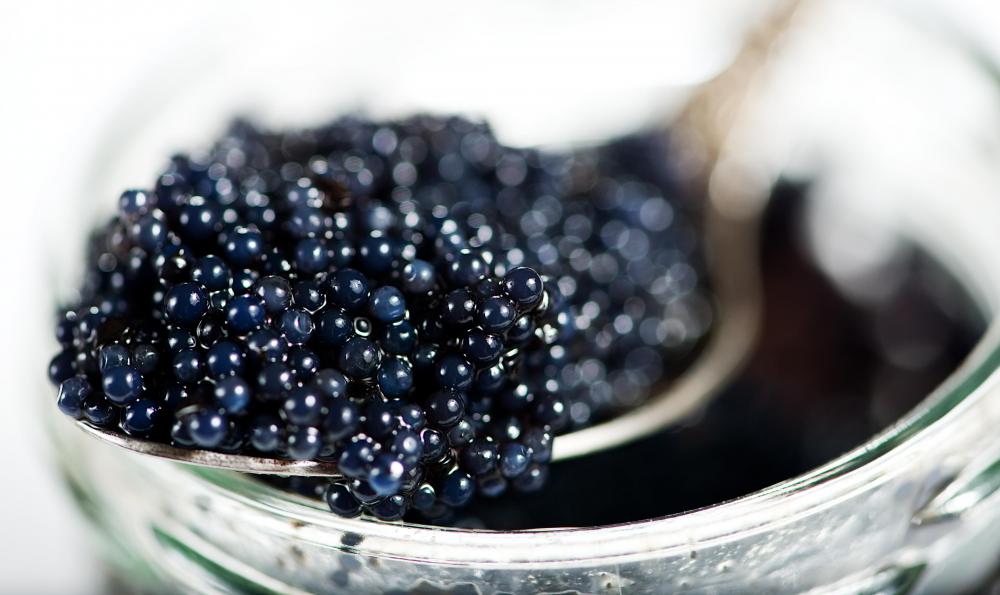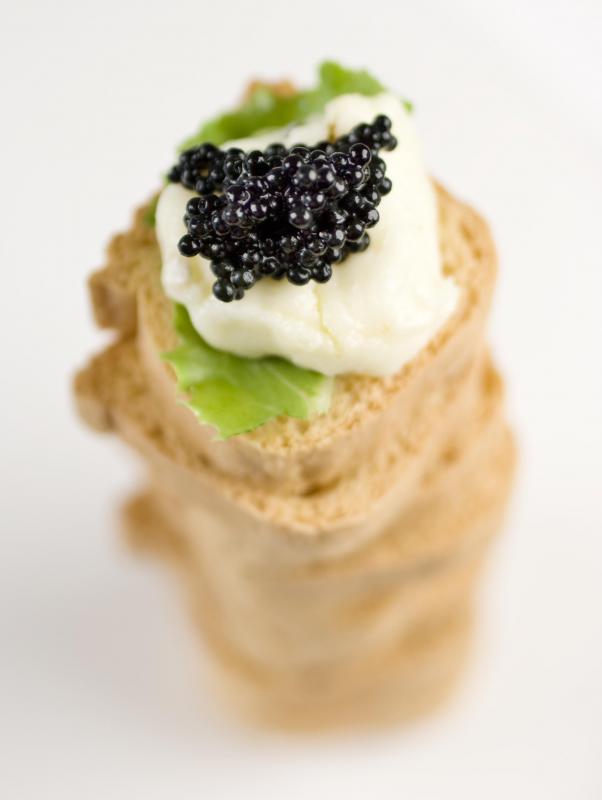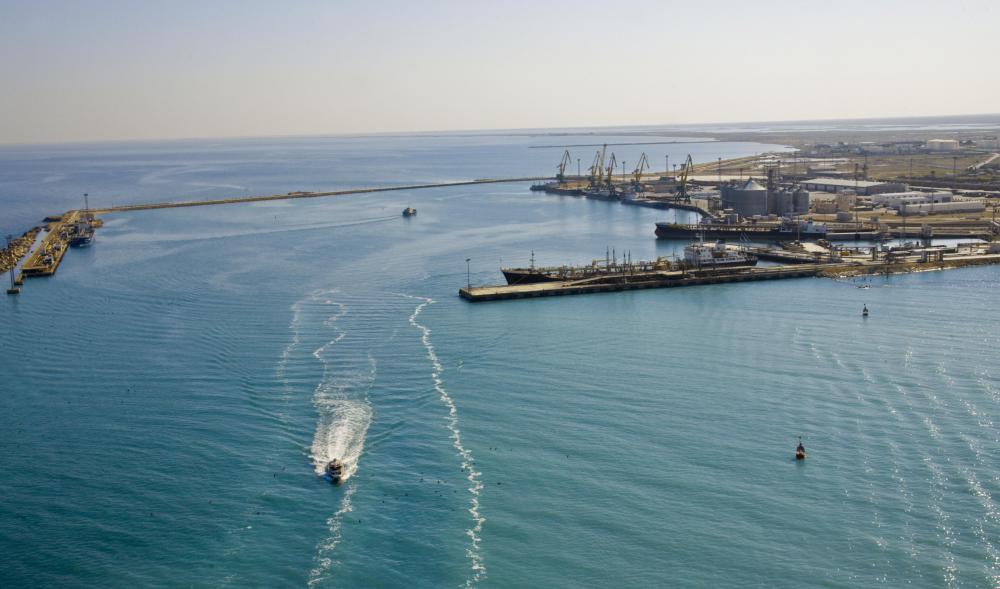At AllThingsNature, we're committed to delivering accurate, trustworthy information. Our expert-authored content is rigorously fact-checked and sourced from credible authorities. Discover how we uphold the highest standards in providing you with reliable knowledge.
What is a Russian Sturgeon?
A Russian sturgeon is a fish of the Acipenseridae family, under the genus of Acipenser. It's scientific name is Acipenser gueldenstaedtii. In the past, it was a prized fish both for its size and for its caviar. Today the fish is critically endangered. The fish's geographic range used to include the Caspian, Black and Azov seas. Today it is only found in the Caspian Sea and the surrounding areas. It is native to the countries of Azerbaijan, Bulgaria, Georgia, Iran, Kazakhstan, Moldova, Romania, Russia, Serbia, Turkey, Turkmeninstan and the Ukraine. Formerly the fish was found in Austria, Croatia and Hungary, but it is now extinct in those locations.
The Russian sturgeon can grow to be a very large fish, measuring more than 6 feet (2 meters) in length with weight in excess of 250 pounds (113 kg). It is black an white in coloration, with the body being black while the dorsal fins and belly are white. It usually feeds on smaller fish, mollusks and crustaceans. It is a shallow-dwelling fish, rarely going below 98 feet (30 meters) in depth. It is mostly seen alone, groups of the fish are typically only seen during spawning, which is in May and June. The fish is very slow to mature, and can live for close to 50 years. This slow maturity makes it especially vulnerable to overfishing.

In the past, Russin sturgeon were prized fish, both commercially and for sport. The massive size of the fish made it a popular gaming target, while its caviar made it a valuable commodity for commercial fishermen. Since 1996 the fish has been categorized as endangered by the International Union for Conservation of Nature (IUCN). Currently the fish is categorized as "Critically Endangered," which is one step above being classified as extinct in the wild.

Efforts to curtail fishing of the Russian sturgeon have not been entirely successful. While there are laws in many countries to limit or completely restrict the fishing of the animal, they are routinely ignored by local fishermen. Fishing is not the only reason for the fish's massive population decline. A major contributor to its decreasing levels is dam construction. Dams built around the Caspian basin since the 1950s have eliminated more than 70 precent of the fish's spawning grounds, making it very difficult for the fish to breed. Pollution of waters from oil and industrial waste is also killing the fish in mass numbers. It is estimated that tens of thousands of Russian sturegon, if not more, have been killed as a direct result of water pollution.

Efforts have been made to breed the Russian sturgeon in captivity and release life fish into the wild, but they have not been very successful. In the 1990s, millions of fry were released into the Volga river and Sea of Azov in an effort to restore populations of Russian Sturgeon, neither were very successful. According to the IUCN only one natural population of the fish still exists in the wild, and it is being heavily overfished.
Frequently Asked Questions
What is a Russian Sturgeon?
The Russian Sturgeon, scientifically known as Acipenser gueldenstaedtii, is a species of sturgeon native to the Caspian, Black, and Azov Sea basins. Renowned for its caviar, it's a large fish that can grow up to 235 cm in length and weigh over 200 kg. This species has been critically endangered due to overfishing, habitat loss, and pollution.
How long do Russian Sturgeons live?
Russian Sturgeons are known for their longevity, with lifespans that can exceed 50 years. Their slow growth and late maturity, with females often not reproducing until they are around 10 to 16 years old, contribute to their vulnerability and the impact of overfishing on their populations.
Why is the Russian Sturgeon endangered?
The Russian Sturgeon is classified as critically endangered, primarily due to overfishing for its prized caviar and meat. Additionally, habitat degradation, including the construction of dams that block migratory routes, and pollution have severely impacted their numbers. Conservation efforts are crucial to prevent their extinction.
What does the Russian Sturgeon eat?
Russian Sturgeons are benthic feeders, meaning they consume food from the bottom of water bodies. Their diet mainly consists of small fish, crustaceans, and mollusks. They use their sensitive barbels to detect prey in murky waters, which they then vacuum up with their protrusible mouths.
How can we help conserve Russian Sturgeons?
Conservation of Russian Sturgeons involves multiple strategies: enforcing fishing regulations to prevent illegal caviar trade, restoring their natural habitats, and implementing breeding programs. Public awareness and support for sustainable seafood choices can also contribute to reducing the demand that drives overfishing.
What is the significance of Russian Sturgeon caviar?
Russian Sturgeon caviar, known as 'black gold,' is highly valued for its flavor and texture, making it one of the most expensive delicacies in the world. The overexploitation for caviar has been a major factor in the species' decline, leading to strict international trade regulations under CITES to protect the remaining populations.
AS FEATURED ON:
AS FEATURED ON:













Discuss this Article
Post your comments